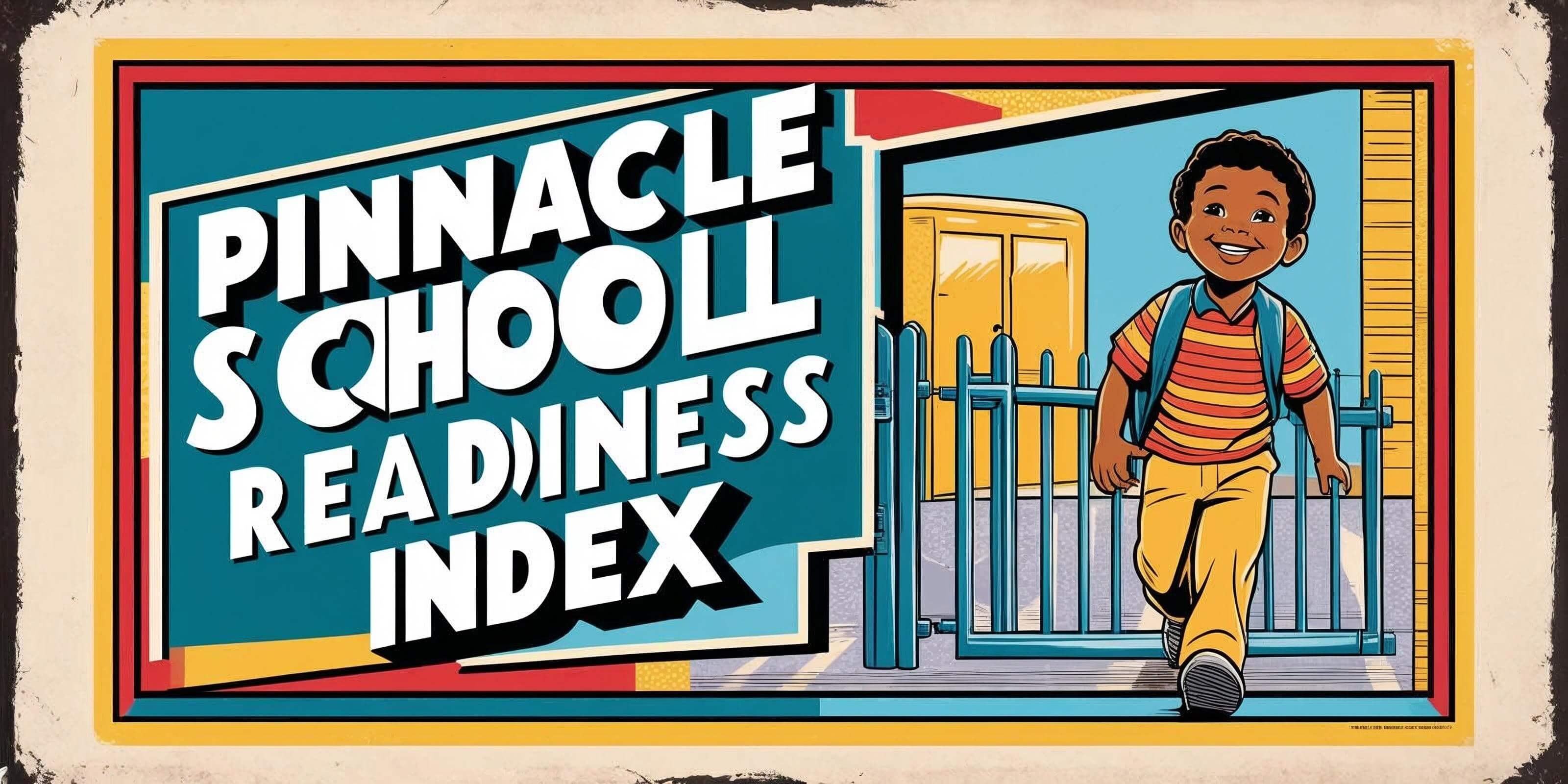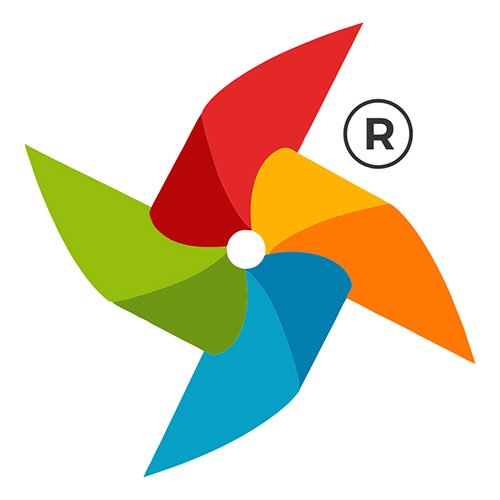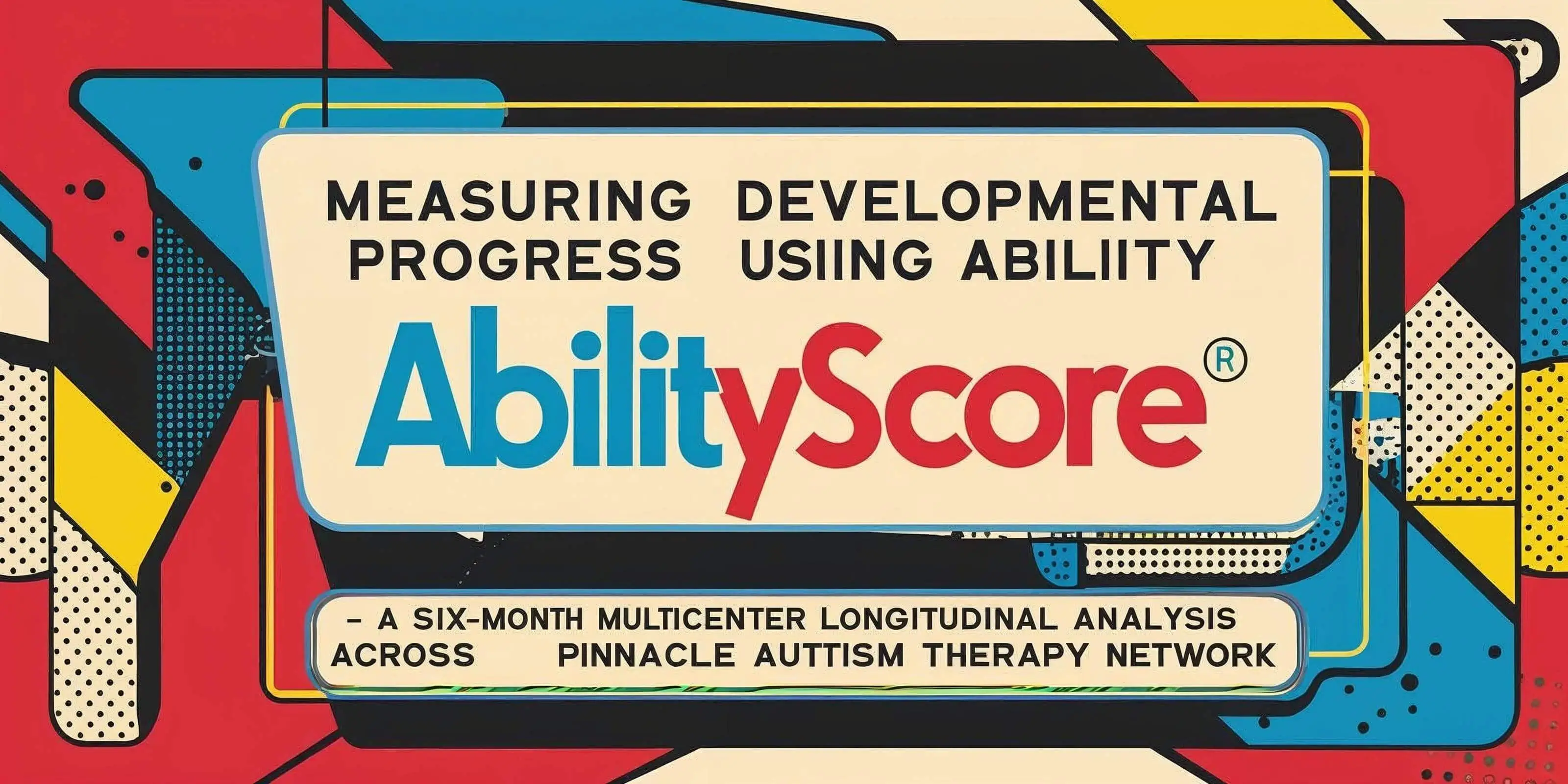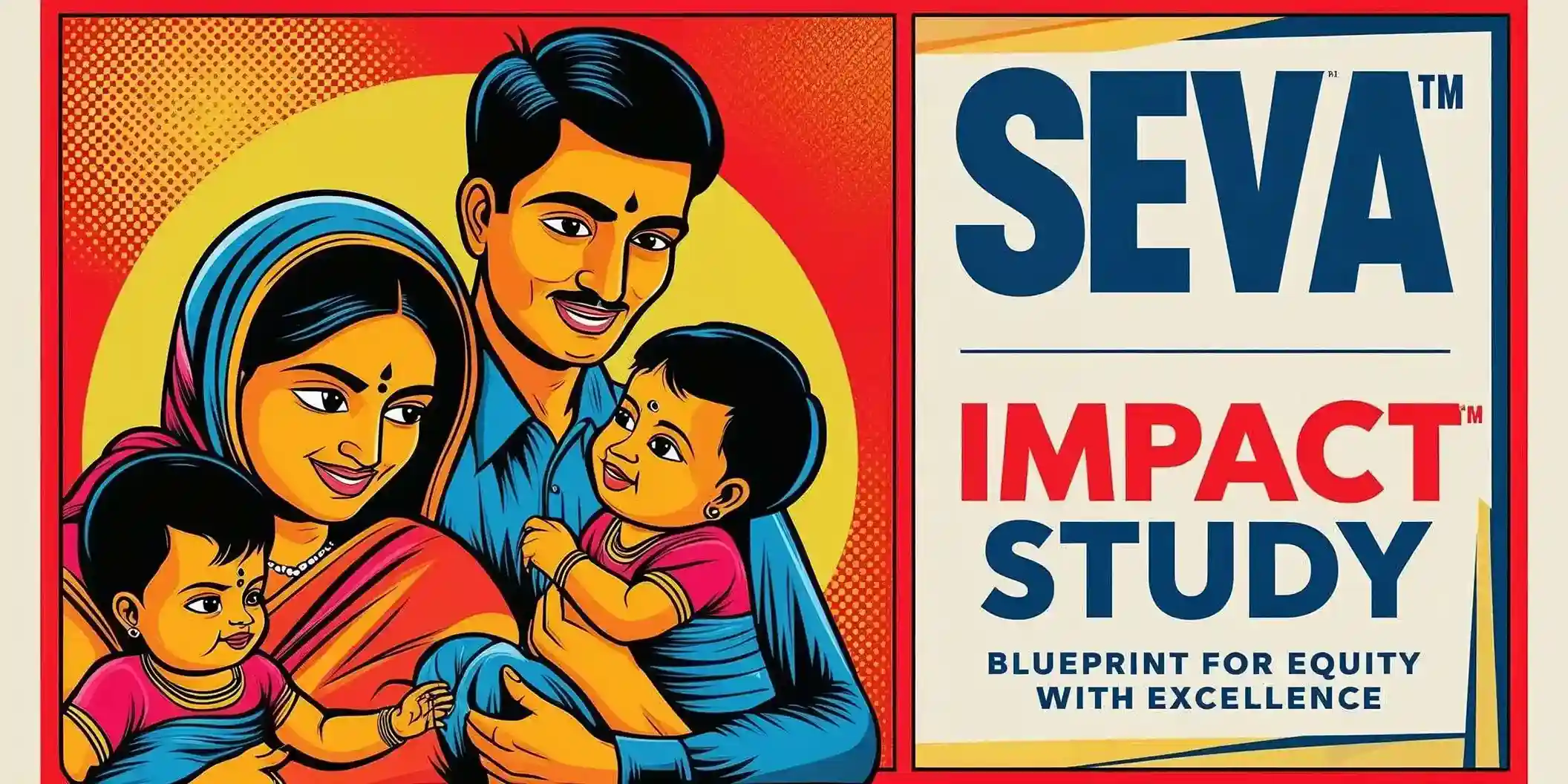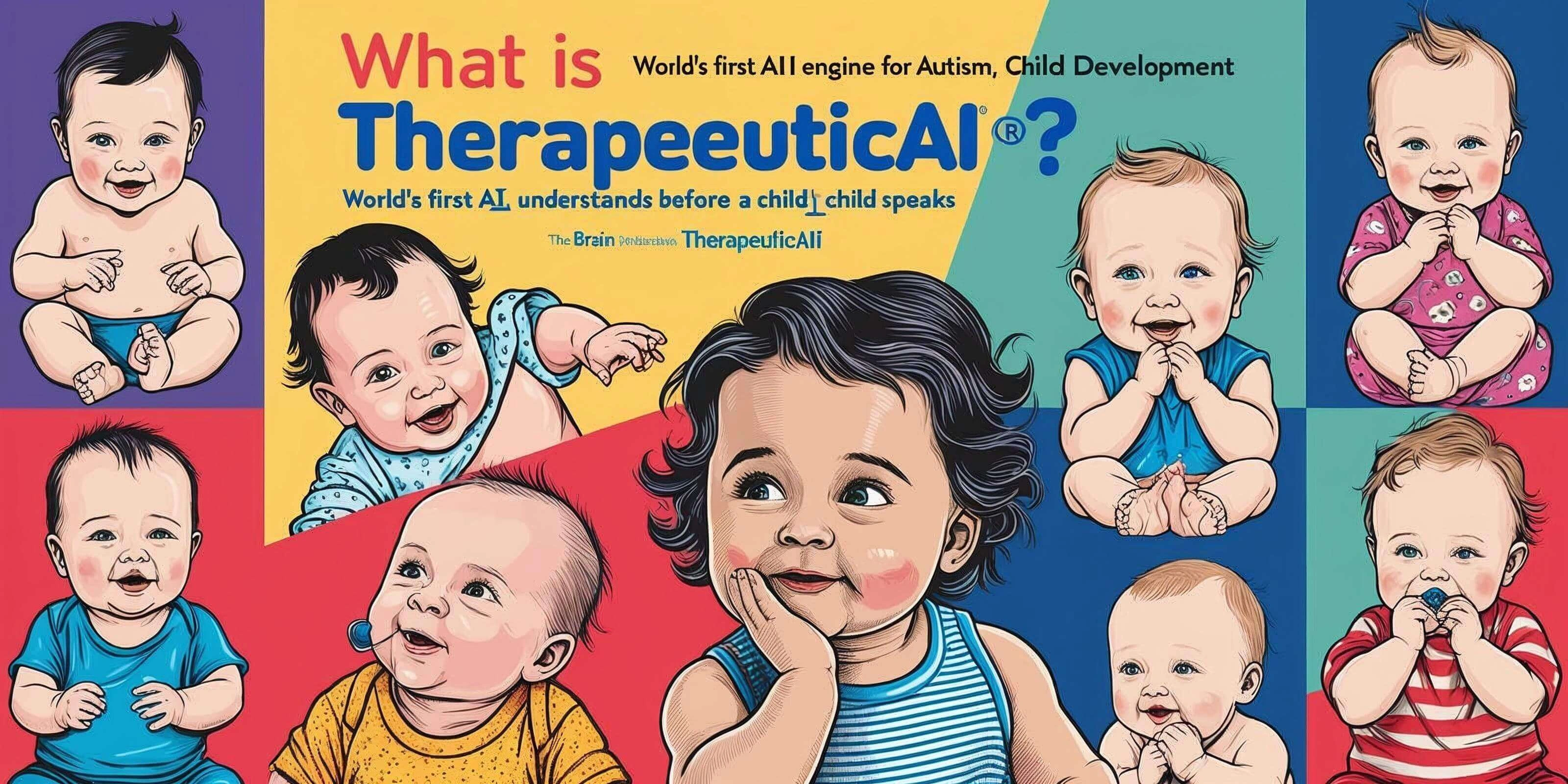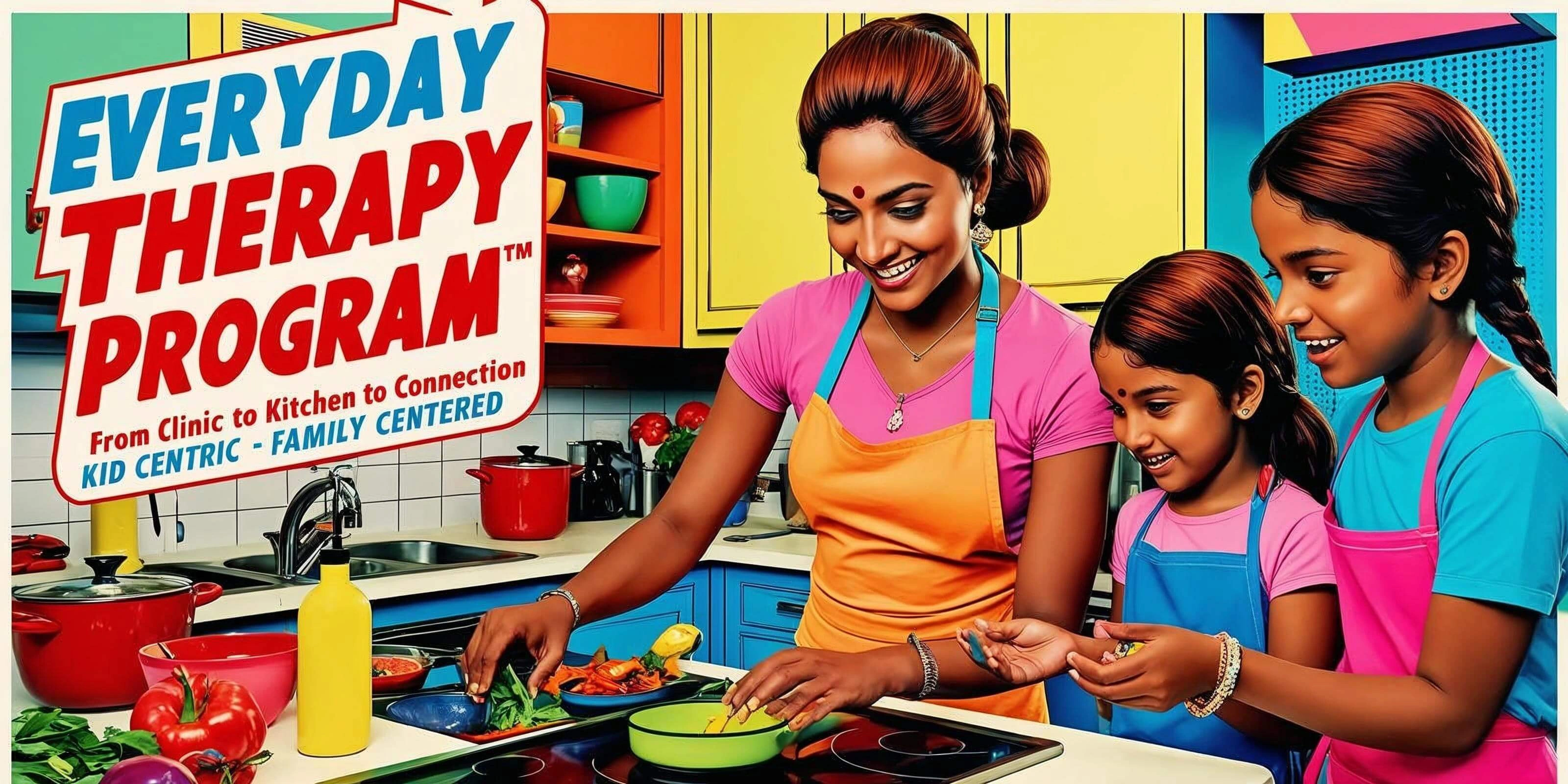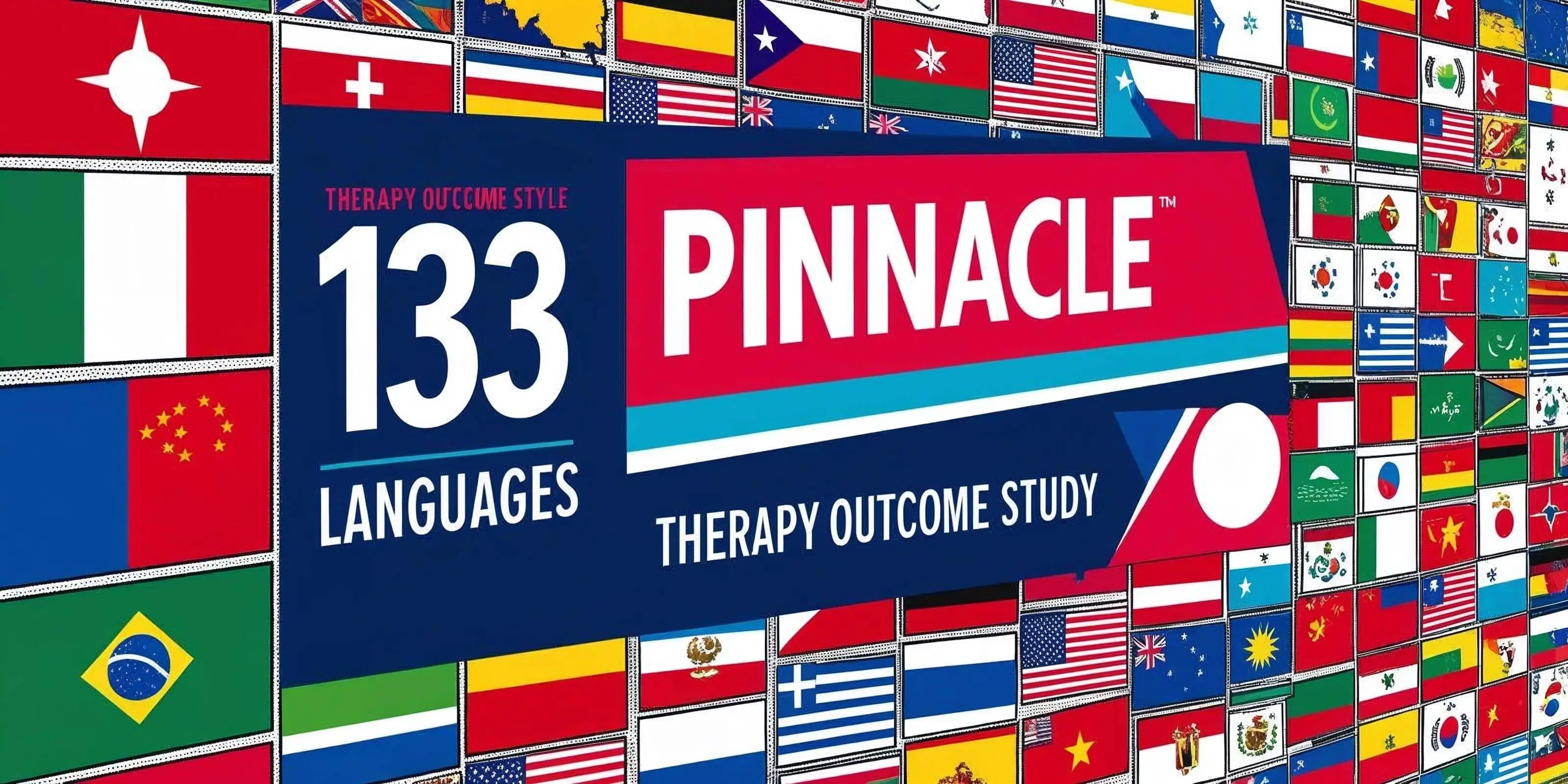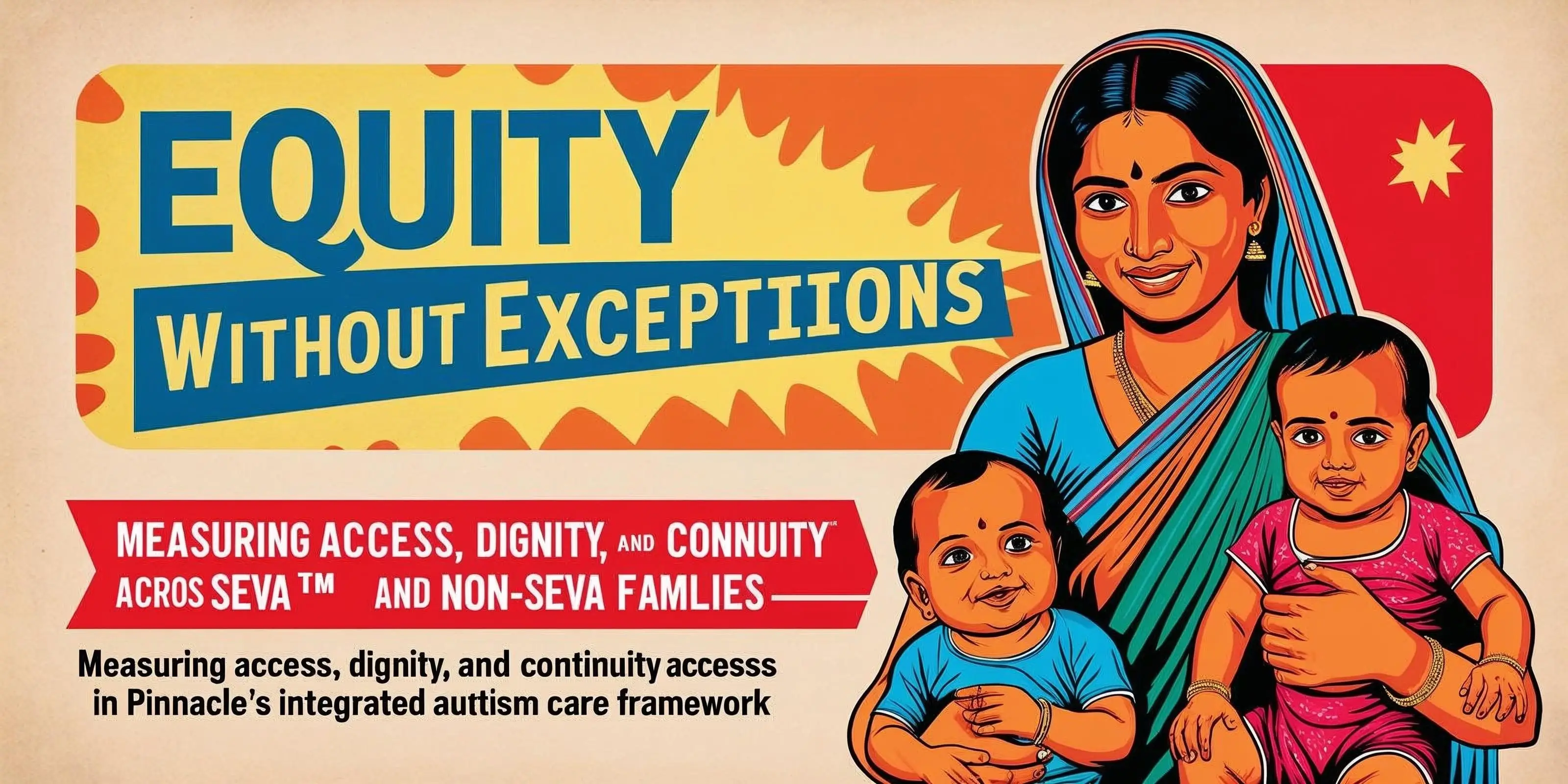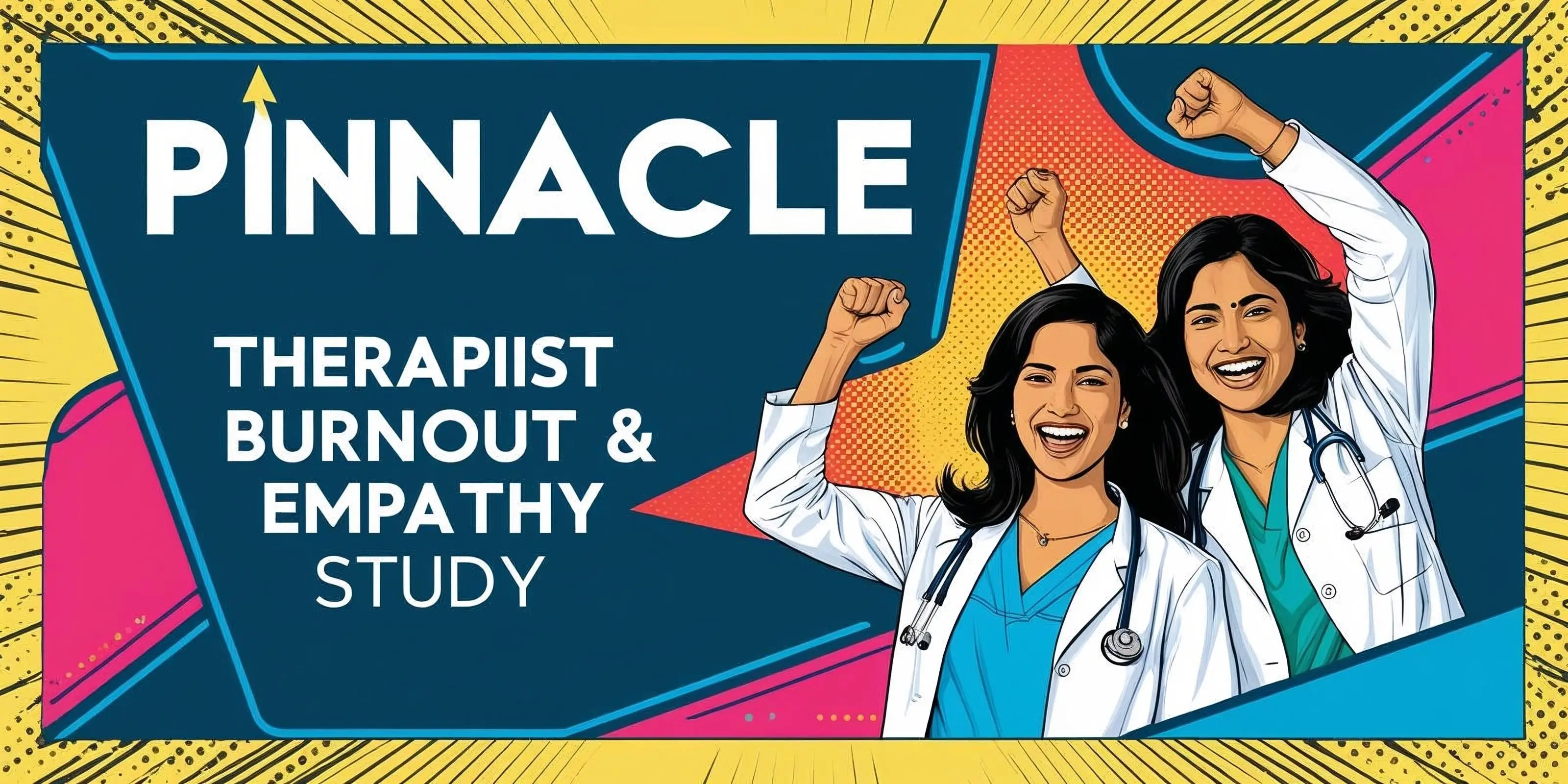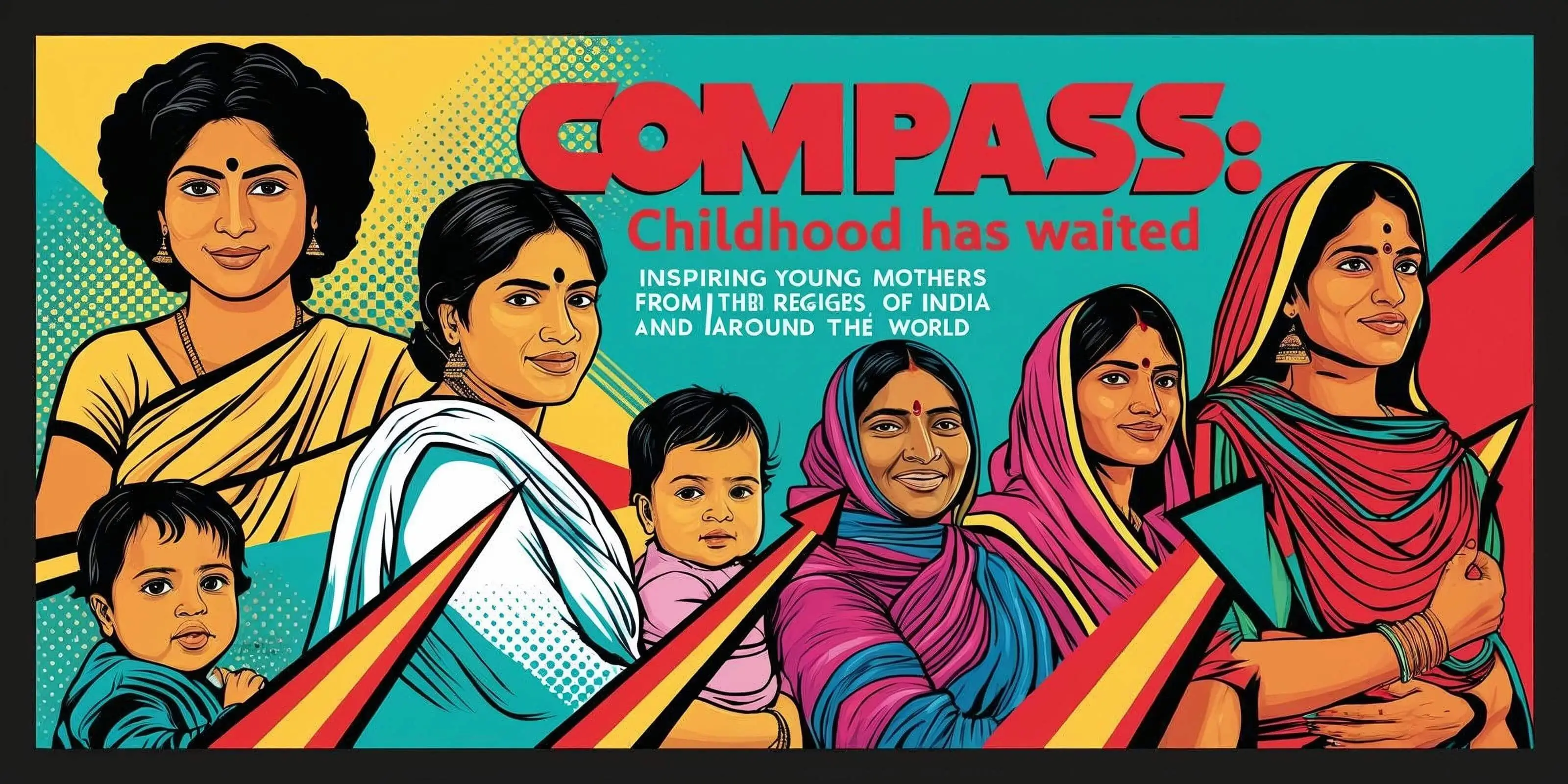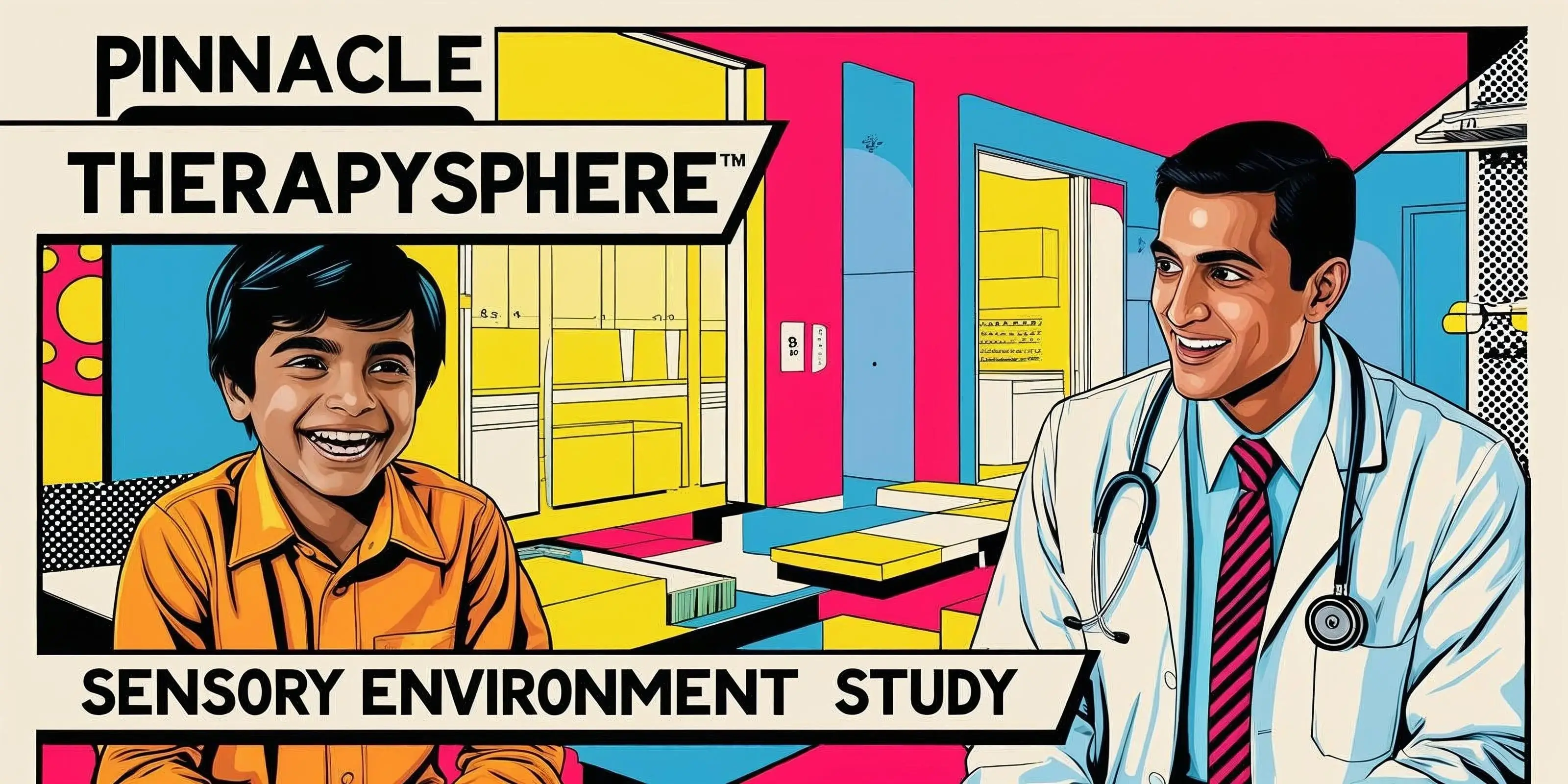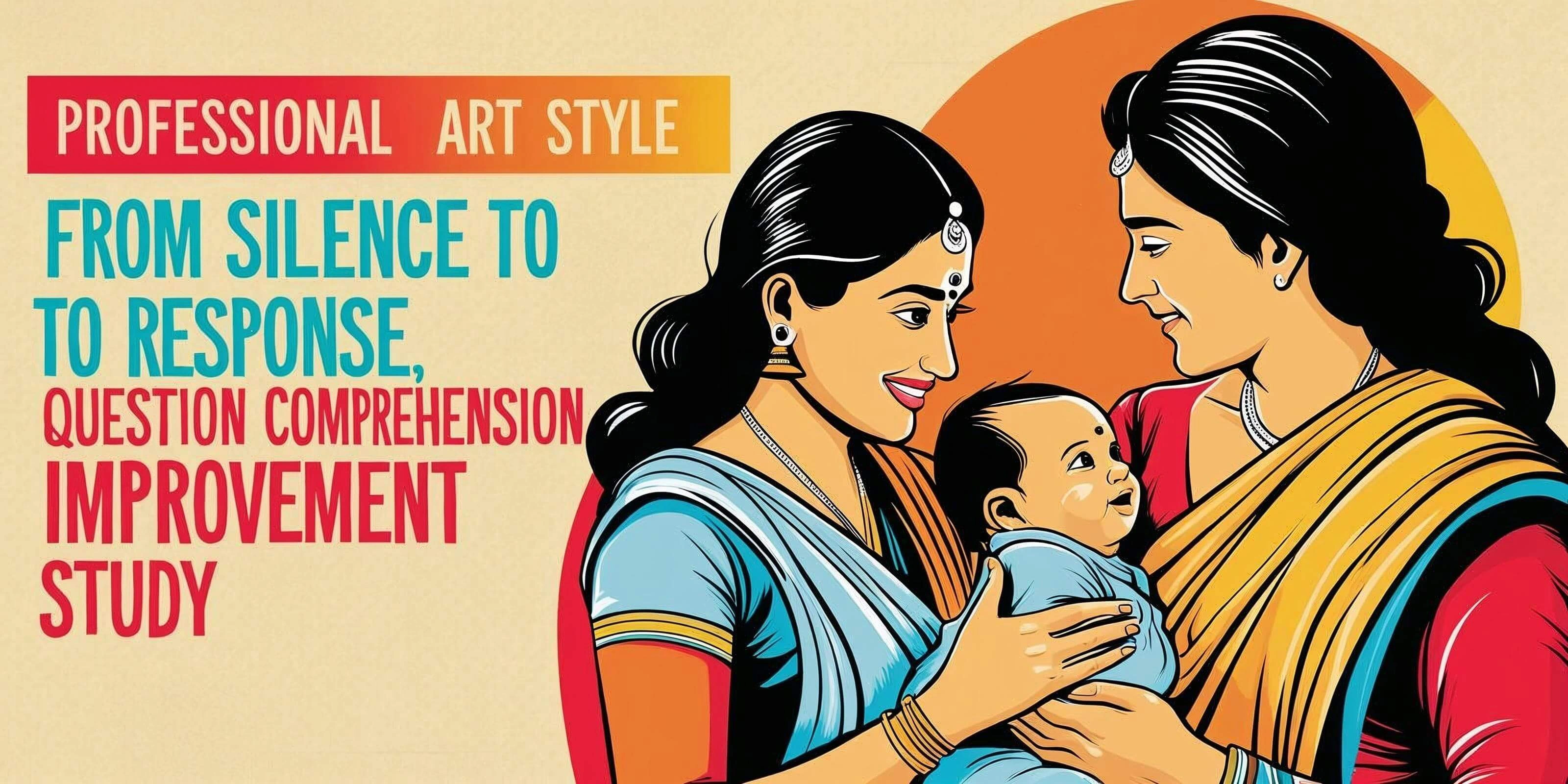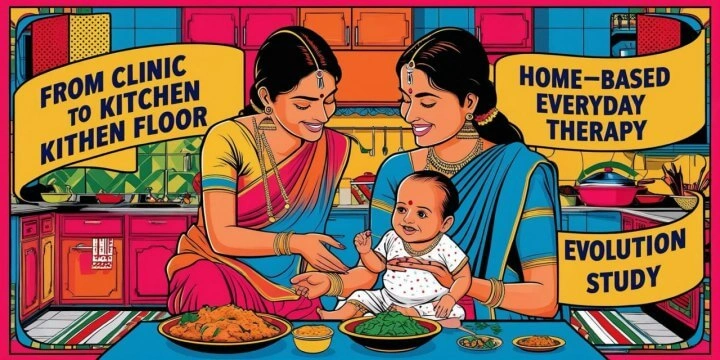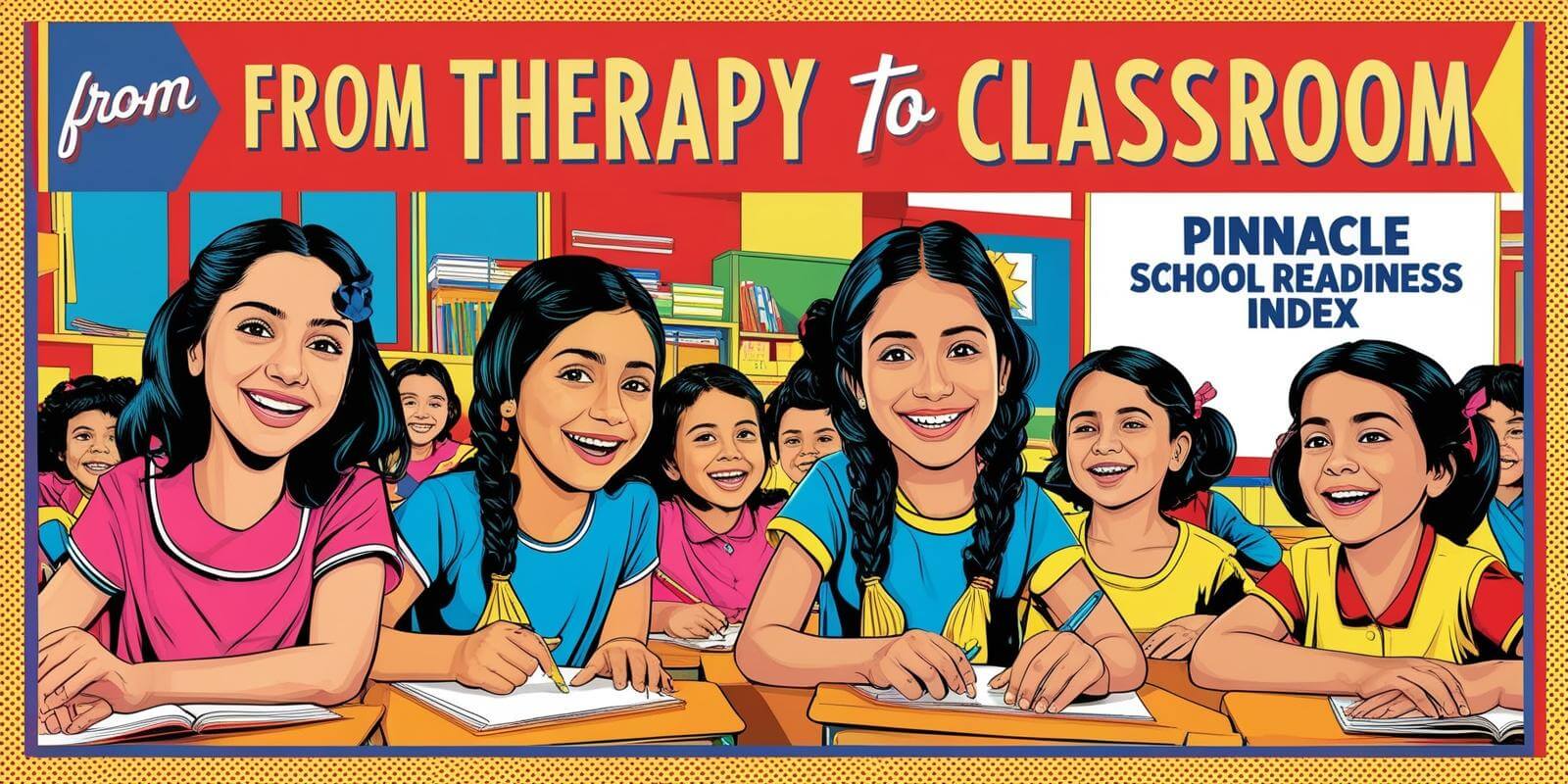
From Therapy to Classroom
Pinnacle School Readiness & Inclusion Outcomes Study
A global outcomes study evaluating the impact of Pinnacle’s integrated therapy model on mainstream school inclusion and classroom independence — powered by the patented AbilityScore®.
1. Executive Summary
This study investigates how children with developmental delays respond to over 9 months of therapy at Pinnacle Blooms Network, focusing on school readiness and mainstream inclusion. Using AbilityScore® and a therapist-rated Classroom Independence Index, it measures how prepared children are for school settings.
- 🟢 Average developmental gain of +217.41 AbilityScore® points
- 🟢 85% of children successfully transitioned to mainstream or inclusive schools
- 🟢 79.03% average classroom independence achieved
These results make Pinnacle a model for measurable, school-directed, inclusion-capable therapy — delivering not just clinical progress, but social transformation.
2. Study Objectives
This study set out to evaluate whether Pinnacle’s integrated, long-term therapy model:
- Enables children to be enrolled in mainstream or inclusive schools
- Equips them with functional independence for classroom routines
- Improves AbilityScore® as a predictive indicator of readiness
3. Study Design & Methodology
This was a longitudinal outcomes study with the following structure:
- Sample Size: 60 children, aged 3–10 years
- Duration: ≥ 9 months of continuous therapy
- Tools: AbilityScore® (0–1000 scale), Mainstream Enrollment Indicator (Yes/No), Classroom Independence Index (0–100 scale)
- Therapy Format: Weekly multi-disciplinary sessions (Speech, ABA, OT, Special Ed)
- Powered By: TherapeuticAI® + Everyday Therapy™
4. Results Summary
Avg. Initial AbilityScore®: 486.88
Avg. Final AbilityScore®: 704.28
Avg. Net Improvement: +217.41
% Mainstream Enrolled: 85.0%
Avg. Classroom Independence: 79.03%
Min Independence: 58.49%
Max Independence: 99.79%
Standard Deviation & Range:
- AbilityScore® Net Gain SD: ±42.7 points
- Classroom Independence SD: ±9.6%
- AbilityScore® Range: 398.2 → 899.6
- Independence Range: 58.49% → 99.79%
5. Interpretation
- Score Jump Across the Threshold: Children moved from an average AbilityScore® of 486.88 (Yellow Zone) to 704.28 (Green Zone) — a transition that aligns closely with school readiness and independence.
- Mainstreaming Success: 85% of the cohort were enrolled in mainstream or inclusive educational programs, showcasing therapy-to-school transferability.
- Functional Independence: At 79.03% average independence, children could follow class routines with minimal adult support — including task execution, peer engagement, and toileting.
-
Inclusion Split: Of the 85% successfully placed in schools:
- 62% joined regular mainstream classrooms
- 23% were placed in inclusive setups with teacher support or accommodations
6. Child Profiles & Parent Voices
Child ID #27
- Initial AbilityScore®: 422.3 → Final Score: 679.8
- Enrolled in: Grade 1, local CBSE school
- Classroom Independence: 74%
- “He used to hide under tables. Now he stands in assembly.” — Teacher Feedback
Child ID #14
- AbilityScore®: 512 → 751
- Enrolled in: Government Inclusive Pre-K Program
- Classroom Independence: 91%
- “She helps distribute pencils to other kids. That’s how confident she is now.” — Therapist
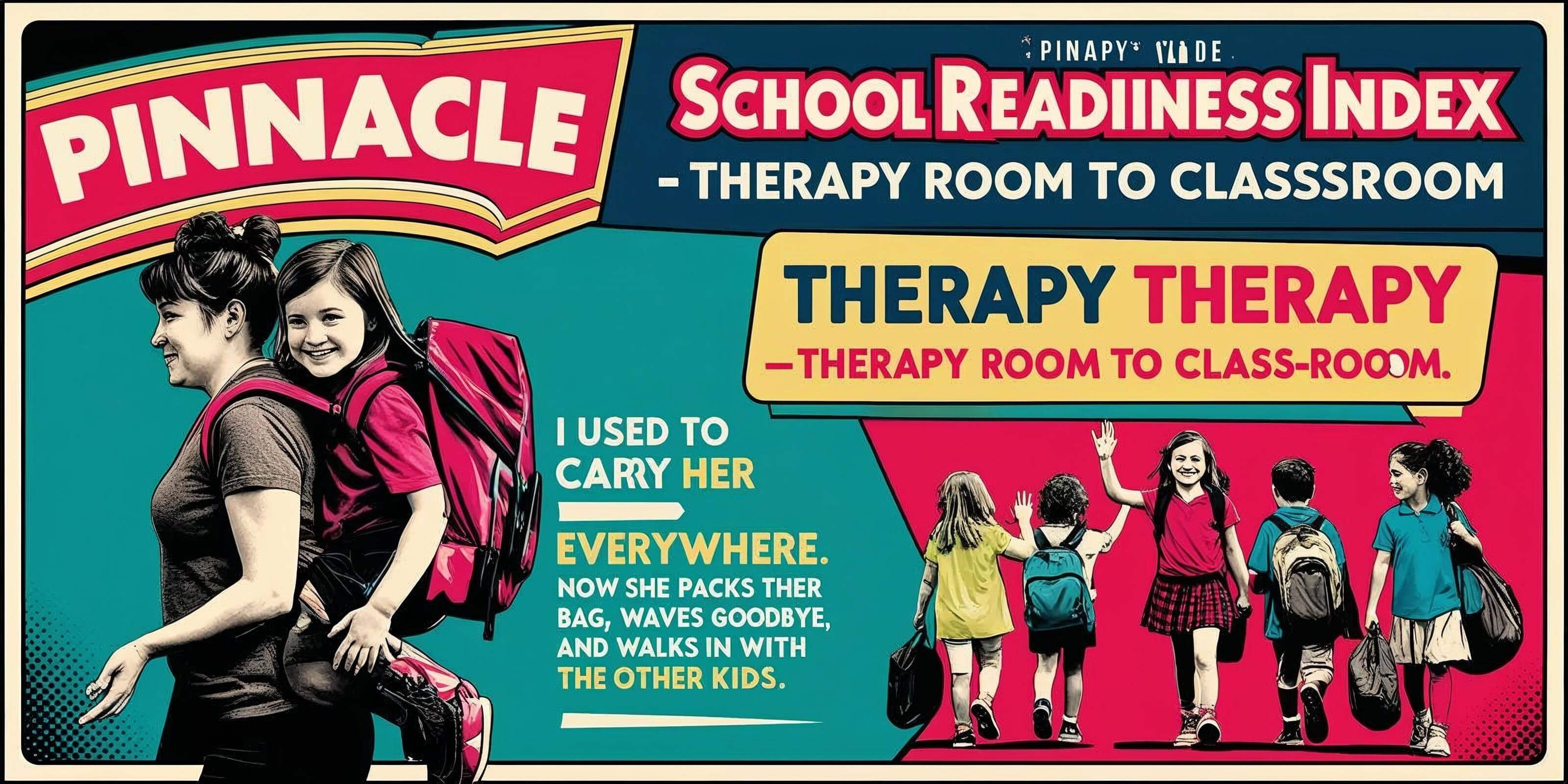
💬 Parent Testimonials
“We never imagined our son could join a regular school. Pinnacle gave him not just therapy, but confidence. He walks to the school gate now with a smile.”
“I used to carry her everywhere. Now she packs her bag, waves goodbye, and walks in with the other kids. That’s what real therapy means.”
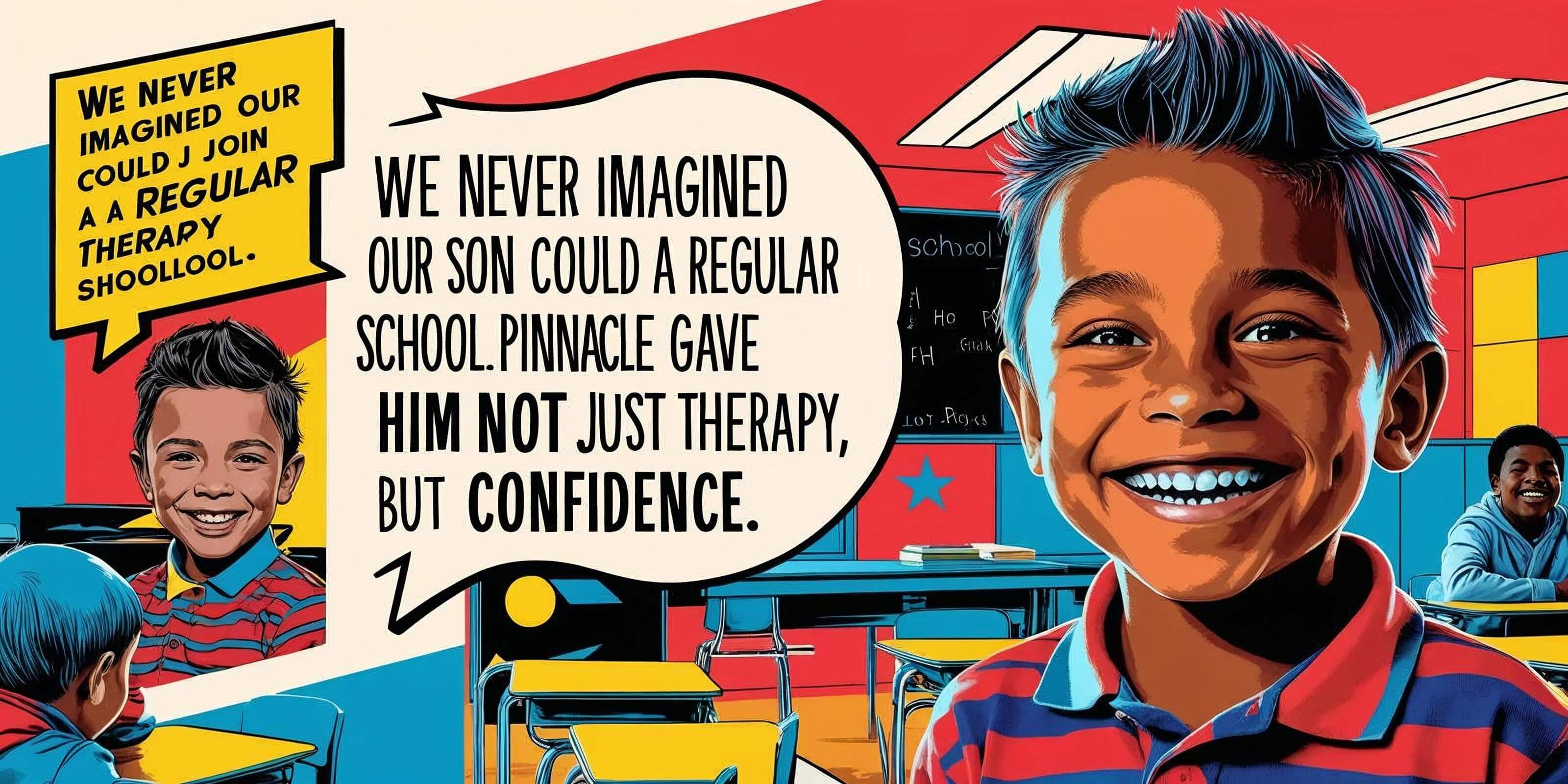
7. Global Context & Benchmarking
Around the world, one of the biggest challenges in autism and developmental therapy is knowing when a child is truly ready for school — and how to measure that readiness reliably.
Most existing systems rely on:
- 🧠 Subjective therapist judgments
- 📝 Generalized school-readiness checklists
- ❌ No quantifiable, predictive scoring
AbilityScore® solves this by offering:
- ✅ A standardized readiness threshold — Green Zone ≥ 700
- 📊 Objective, trackable growth over time
- 👩🏫 Insights teachers can interpret and act on confidently
🌍 Global Comparison
While tools like the Vineland Adaptive Behavior Scales (USA), Brigance Inventory (USA), or EYFS Profile (UK) provide broad snapshots of child development, none deliver a single, color-coded, predictive score directly tied to school inclusion.
AbilityScore® is the world’s first system to combine predictive clarity, therapy alignment, and inclusive education readiness into one universal numeric metric (0–1000).
8. Limitations & Considerations
- This study focused only on children who completed ≥9 months of therapy. Real-world dropout effects were not factored in.
- “School readiness” in this study refers to admission success and basic classroom independence — not formal academic performance.
- Regional differences in school policies (urban vs. rural) were not controlled or stratified in analysis.
- AbilityScore® is continuously evolving as AI models learn from more children across diverse backgrounds, ensuring growing inclusivity and accuracy with every iteration.
9. Future Scope
- Expand the study across 500+ children in rural, tribal, and multi-lingual zones to validate inclusion readiness in diverse environments.
- Integrate teacher feedback as part of future AbilityScore® validation models to bridge therapy and classroom ecosystems.
- Develop an AI-based School Transition Readiness Index (STRI) to forecast transition timing and required support intensity for each child.
- Partner with State Education Boards to build school mapping tools powered by aggregated AbilityScore® zone data.
10. Policy Recommendations
- Officially adopt AbilityScore® as India’s national developmental School-Readiness Index.
- Mandate that all special education assessments include a standardized developmental score to aid transition planning.
- Provide long-term therapy funding for children scoring below 500, ensuring they reach the Green Zone (≥700) for school readiness.
- Integrate AbilityScore® zone data into UDISE+ (Unified District Information System for Education), enriching school planning and inclusion reports.
- Train inclusive school teachers to read, interpret, and act upon AbilityScore® insights to better support integration and independence.
11. Conclusion
Therapy is not complete until the child walks into a school with confidence.
Mainstream inclusion is not a hope — it is a planned, prepared, and proven transition.
AbilityScore® is the bridge. The classroom is the destination.
This study shows the road is not only visible — but walkable.
12. Learn More & Get Involved
✅ Start your child’s AbilityScore® assessment:
www.pinnacleblooms.org/abilityscore
🤝 Collaborate for school-readiness pilots:
care@pinnacleblooms.org
📞 Book a free consultation:
WhatsApp: 9100 181 181
Or call our National Autism Helpline: 9100 181 181
